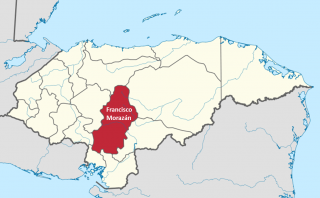Cofradía, Metro, Honduras
![]()
![]()
![]()
![]()
![]()
![]()
![]() Click on Programs to learn more about their work in this community
Click on Programs to learn more about their work in this community
General Information

| Population* | 2500 |
| Number of homes | 700 |
| Avg # of people per home | 3.6 |
| Number and % of children |
(0-5): 130/8.3% (0-9): 900/36% |
| Electricity | Yes |
| GPS |
N 14° 13.376’ W 087° 10.781’ |
| Altitude | 1005 ft |
| Municipality | Distrito Central |
| Department | Francisco Morazán |
| Corresponding Health Center | CESAMO - Cofradia |
| Distance from compounds | 1 hour 45 minutes |
| Road conditions | Good |
* Population does not reflect how many patients will be seen on medical
brigades as many people from surrounding communities come seeking
Medical Brigades medical attention.
Top Three Needs Expressed
The top three needs expressed by the key community members are a nutrition program for children and home infrastructure projects particularly with roofs and floors. There is also a project of the evangelical church to support a nursing home for the elderly on the church property, but that lacks funding to implement.
Cofradía’s educational system includes Kinder, Primary, Middle, and High schools (through 12th grade). At the high school level, business, beauty, and carpentry are offered as vocational programs. There are 200 students at the schools and Prof Marlon is the school director. It is approximated that about 70% of the community knows how to read and write.
Cofradía has a water system that was constructed in 2000 and is in very good condition. Water arrives every day and is chlorinated at least once per week.1 75% of the community is connected to the water system. There is a Water Council that is made up of 7 active members and Henry Zelaya is a key contact.
Cofradía does have a health center in the community that is staffed by a physician and a nurse, Lesbia Peralta. There is no community health committee and dental care is not available in community.
The most common illnesses seen by community members are diarrhea, respiratory infections and intestinal parasites. Approximately 98% of the community has latrines that currently function. 0% has eco-stoves (estufas justas); most people use normal stoves with chimneys. About 50% is estimated to have cement floors and 60% has pilas (water storage units).
The average family income per month is estimated to be 5000 Lempiras, which is approximately L1000 (US $52.94) per person3. The majority of homes are made of adobe, though several are of concrete block and brick. The main form of employment is non-technical, like as factory workers for fabric or soft drink/beer companies. Few people work in agriculture cultivating corn, beans, and tomatoes. Members of Cofradía have access to credit from commercial banks outside the town, or from FUNDAMICRO that gives out loans to small business owners.
Cofradía also receives medical brigades from the Evangelical Church, most recently in May 2010. As of 2010, FUNDAMICRO serves as a loan agency inty. Project Victoria for orphaned children and the RENACER rehabilitation site for recovering drug addicts have been located in Cofradía since the 1950s.
Cofradía is a large town that is relatively close to Tegucigalpa, which means that prices for food and other necessities is significantly higher, however also opens up more options for work and transportation.
|
Education |
11th |
|
Water |
70th |
|
Health |
57th |
|
Socio-economics |
92nd |
|
Collaboration |
56th |
|
Overall |
85th |
Total Communities Evaluated: 97
Source of information: Key informant interview, Centro de Salud statistics
Date of interview: 20 May 2010
1The accepted regulation frequency for chlorinating water is every 4 days.
2CESAMO and CESAR are terms used for types of health centers. CESAMOs are larger, more comprehensive facilities that usually have a physician on staff at all times and occasionally a dentist. CESARs are more remote, less equipped facilities, usually with 1-2 nurses on staff.
3According to Red Solidaria and World Food Programme in Honduras, the average family is approximated at 5 people per household, the poverty line is L930 (US$49.23) per person per month, and the extreme poverty line is L617 (US$32.66) per person per month.